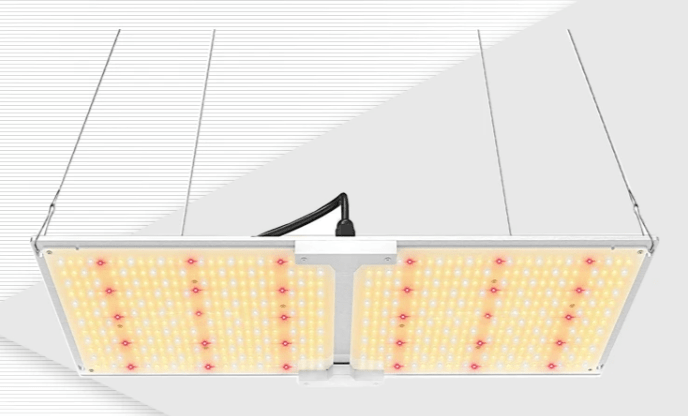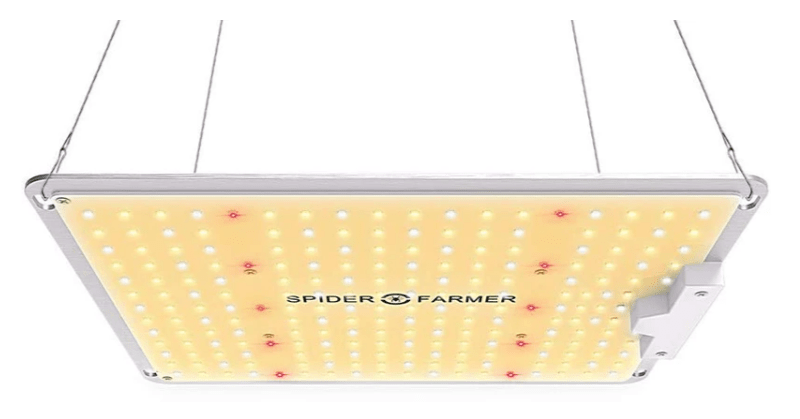LED lights are revolutionizing the way we grow plants, enabling both professionals and enthusiasts to achieve optimal environment efficiency with minimal effort. The advantages are numerous, with just a few of the main ones mentioned below:
- Stimulated growth
- Adjustable wavelength
- Energy efficiency
- Compactness
- Durability
LED grow lights bring definite benefits, but choosing the right product usually proves to be quite challenging. The wide array of models available on the market, confusing statements from manufacturers and misleading product descriptions are some of the main reasons behind this.
Starting off with the wrong set of lights can be detrimental to your growing efforts, so making an educated purchase is a must. There are many factors and properties that need to be considered, but you should also be aware of your growing purposes, location, and other specifics involved. Following is a list of the most important things you should look for when making your choice.

LED wattage
The traditional power measurement for grow lights has been Watts which has made things simple up until the development of LED. A Watt of power equals 1 Watt of power output of light. The confusion comes when you try to measure LED grow lights in Watts. In the case of LED, a Watt of power into the light isn’t a Watt of power out of the light. Since LEDs are much more efficient than incandescent bulbs we must use a different measurement to qualify the power being generated by the LED grow light.
You might have heard or read the term “PAR” related to led grow lights, this is the actual measurement of the useable light spectrum produced by the LED. You see LEDs get their efficacy from not converting as much energy into heat compared to incandescent bulbs. This means that more of the energy used by the LED grow light is converted to actual usable grow light.
“PAR” stands for photo-synthetically active radiation which is light emitted in the electromagnetic spectrum between 400 nm and 700 nm while humans only see light wavelengths between 500 nm and 600 nm. Plants can convert light wavelengths between 400 nm and 700 nm to energy via photosynthesis. This still doesn’t tell the whole picture, we haven’t talked about the light intensity.
This is where things start to get a little more complicated. The next term you will need to know is “PPF” or photosynthetic photon flux, sounds like a Star Trek reference I know but it just means the amount of light produced by a light source per second. This leads us right to another term, “PPFD” which stands for photosynthetic photon flux density. This is the measurement of how many photo synthetic photons fall on your plants surfaces per second.
How are you supposed to figure out how large of a LED grow light you need? The average LED grow light draws about 32 watts to cover 1 square foot for flowering cannabis, we’ll use flowering cannabis to calculate power requirements since the flowering stage requires significantly more power. A typical HID light would draw about 45 watts per square foot just for comparison.
- 1′ x 1′: 32 watts
- 2′ x 2′: 128 watts
- 3′ x 3′: 288 watts
- 4′ x 4′: 512 watts
- 5′ x 5′: 800 watts
- 6′ x 6′: 1152 watts
Full spectrum light
Full spectrum lights are the wave lengths of light between 440 nm and 700 nm which includes ultraviolet and infrared. Cannabis plants use this whole spectrum to photosynthesize light into simple sugars.
When purchasing a LED grow light system, you will find that the higher end systems will all be full spectrum. Be cautious when investigating cheaper grow lights as manufactures sometimes claim to be full spectrum but don’t provide IF and IR LED Chips in their units.
Is full spectrum light absolutely a requirement? You can get away without ultraviolet and infrared but this could leave your plants open to unwanted issues such as molds and mildews. Ultraviolet light is natures sterilizer, it’s even used to kill virus’s. When growing in a small area such as a grow tent it really is important to have ultraviolet to mitigate the risks of enclosed growing.
FULL SPECTRUM LED GROW LIGHTS generally have two operational modes; vegetation and flowering. In Vegetation mode the grow light will use 40% less energy and use less red light. This is because vegetation doesn’t require as much energy as flowering a plant. As well flowering plants require more red light to grow fat health buds. When you’re ready to start flowering your plants just flip the operational mode over to flowering and you are done. No need to change light bulbs.
One thing is for sure a full spectrum LED grow light will produce a larger yield than a LED grow light that isn’t full spectrum. I’ve grown with both options and the full spectrum option really takes LED grow lights to the next level.
Managing Heat
It is true that LED grow lights produce about 40% less heat than traditional incandescent light bulbs. LEDs achieve this by producing only useful light spectrums for growing plants, it cuts out all the white light which greatly reduces the heat generated.
LEDs which is short for light emitting diodes, are solid state electronics. As with all electronics heat is the enemy. With LED grow lights excessive heat means ware on the electronics. LED chips that are normally rated for 50,000 or more hours can have their lifespan greatly reduced by overheating.
Quality LED grow light manufactures engineer their units with fans and heat syncs which greatly dissipate heat. Heat is drawn into aluminum heat syncs where cooler air drawn into the light unit and over the surfaces. This brings a great reduction in heat to the LED grow unit as well as the whole growing area. The heat left over from the grow light is generally easily managed with simple ventilation of your grow area.
Especially QUANTUM BOARDS LED GROW LIGHT which run much cooler than other LED panels, so the fixture doesn't even need fans. Passive cooling is all you need. Not only does that mean silent operation, it also means a longer lifespan.
ECO Farm Samsung LM301B 600W Quantum Board

ECO FARM GROW LIGHTS utilize the latest in high yielding LEDs technology today-Samsung LM301B diodes, high Energy Efficiency with 2.7 umol/J, delivers powerful light output and uniform canopy penetration to resulting maximum higher yields. Running 50% less power than the HPS or other SMD LEDs or Blurple lamps.
Upgraded series growing lights have a dimming knob and light switch. A single light can be adjusted the light intensity at liberty. Multi-light Connection with unified dimming especially beneficial for large area of indoor growing and commercial planting.
Excellent full spectrum - white, blue, red and IR (3000K, 660nm and IR 760nm and UV 395nm). 3000K diodes providing more reddish light. The 660nm red and IR light is especially useful during bloom, where it speeds up flowering time and boost yields. Turn your seeds into your own supply. And the light looks fairly natural, so it's good for accurately monitoring plant health.
No Fan Noise Free. High Safety performance MEAN WELL Driver, Fair Waterproofing. Update aluminum board is thick and sturdy, doesn't put out a tremendous amount of heat, high-quality protective covers for cables; User-Friendly Packaging. Quality components mean the light lasts longer, but they also save you money.
SPIDER FARMER LED QUANTUM BOARD

From its name Spider Farmer to the components, I have fallen in love with this quantum board LED. Aptly named, as it looks very much like a hanging spider in your grow tent, the Spider Farmer SF 1000 is well thought out and a thoroughly tested light.
From the deep red diodes to its near-perfect white light, the lamp efficacy is never in doubt with producing high-quality light that your plants will love. A perfect SPIDER FARMER QUANTUM BOARD LED for small indoor grows of 1 to 3 plants.
The efficiency is quite high, with 2,7 umol/J. It only uses 100w but it will generate the same yield as fake 1000W, 1200W blurple led grow lights. Samsung LM301B diodes, provide the highest light output led that you can find currently on the market. They create a better canopy light penetration and will bring you 40% higher crop efficiency with less energy than other red-blue lights.
The process is safer now. There is zero noise, because the design has no fan. It has large areas of solid aluminium heat sink. SF – 1000 has special protective cable covers, waterproof led board and a highly safety MeanWell driver.SF -1000 will lead your plant in an optimum way during all stages, by just adjusting the height and lighting schedule: germination, seeding, veg and bloom.
Final Thoughts
LED grow lights is a revolutionary solution to plant growth. Relying on sunlight to grow your plants is not always enough, especially for places that experience long sunless winters. Now, you can grow plants even inside your home.
So, if you plan to buy LED grow lights, make sure to consider the tips above so you get the best one for your plants.























